Splio BI Connector
Provided by: Splio
Connector type: Destination
Third-party system: Business Intelligence (BI)
Required license: "Marketing Automation + CDP" or "Predictive AI (previously Tinyclues)"
Overview
Splio CDP can let you access the unified data assets that it has prepared for reporting and monitoring purposes, using your Business Intelligence (BI) tool.
This access takes the form of a dedicated Google BigQuery connection through a Google Cloud Platform (GCP) Service Account that you can use to query the Splio CDP data from your BI tool.
This feature is activated and configured on demand. If you are willing to do so, get in touch with your Splio contact.
Service limitations
A few limitations apply to the service. Please note that:
- The service is made available for reporting purposes only (because it is designed for analytical workloads and queries). In particular, the service is not suitable and shouldn't be used for:
- Transactional or real-time queries
- Batched and recurring bulk data exports
- If this service is not configured to use your company's Google invoicing account, it is subject to reasonable use. This means that your access will be blocked if your usage exceeds your daily quota, which is sized for reporting purposes. This quota is proportional to the amount of data you have stored in Splio and is capped at a maximum of 2 TB.
- Splio's responsibility is limited to making the Google BigQuery connection available. Splio is not responsible for assisting you in building dashboards and queries in your BI tool.
Prerequisites
In order to benefit from this connector, your BI tool must support Google BigQuery connections.
At that moment, tools for which compatibility has been assessed are:
- Metabase
- Microsoft Power BI Desktop (online version of Power BI is not supported because of Google BigQuery connectivity limitations in this Power BI version)
Other identified BI tools that should be compatible, but has not been tested include:
- Qlik
- Tableau
- Looker
Looker Studio, previously called Google Data Studio is not supported for security reasons.
Get in touch with your Customer Success or Project Manager in case you want to assess compatibility with the tool you are using by running a connection test.
Data scopes available (generic guidelines)
As your data is unique, every CDP is unique and we cannot provide complete and detailed documentation of shared data. However, here is a list of generic data scopes made available in every Splio CDP instance: user, puchase, purchase_order, store (see Data Architecture page for further information about general dataset architecture).
Setting up your data connection
Setting up the connection depends on the BI tool you choose. As an example, we'll show here how to set up the connection in Metabase.
- First, ask your Splio contact for the GCP Service Account Key.
The key that will be shared with you is unique and reserved for usage from your reporting tool.
- Make sure to not store it anywhere else than in you BI tool. As the shared data contains PII, a compromised key may cause a breach of your data privacy.
- In case the key is compromised, ask Splio immediately for a new key.
With Metabase
- Go to the
Admin settingssection, and selectAdd a database
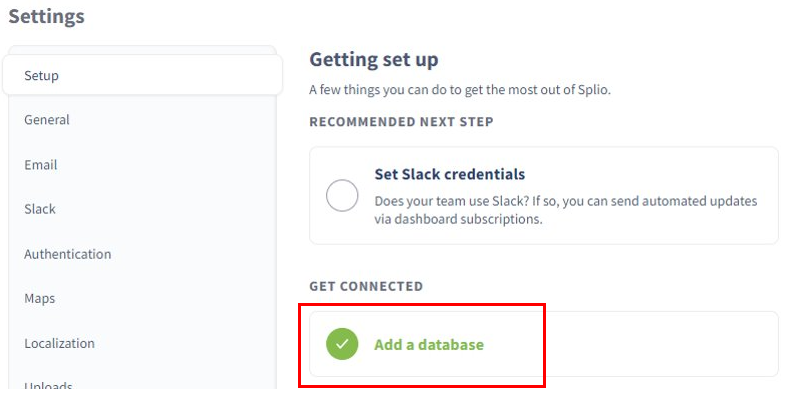
- Fill in the required informations
- Select
BigQueryas a Database type - Display name of your choice, e.g.
Splio CDP - Set
cdp-clientsfor a Project ID override - Select the JSON file that was provided to you
- Select
AllDatasets for accessing all data shared by Splio CDP - In
Advanced options, make sure to deactivate theInclude User ID and query hash in queriesone - Finally, you can
Save, a message should be displayed, informing you the connection to the database is successful
- Select

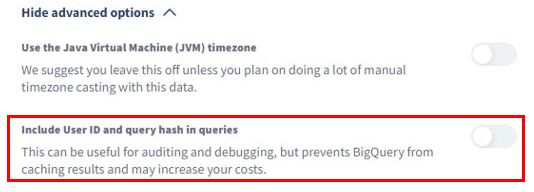
With Power BI Desktop
For further information see related reference page on Microsoft website.
- From the "Obtenir les données / Plus" menu, choose the "Google BigQuery" data source
- On the window that opens asking for Advanced Options, directly click on OK

- Power BI then asks you for the connection authentication information
- Fill
emailinformation with the Google Service Account email provided to you by Splio. It is an email in the form of[email protected](wheremydomainpart is specific to you) - Fill the json key field with the content of the JSON file that was provided to you by Splio (ensure that the pasted JSON value is formatted on a single line)
- Fill
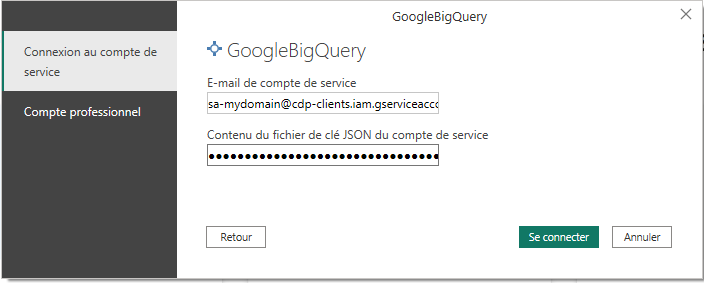
- In the next screen, select the tables you are to use in your report and click "Charger"
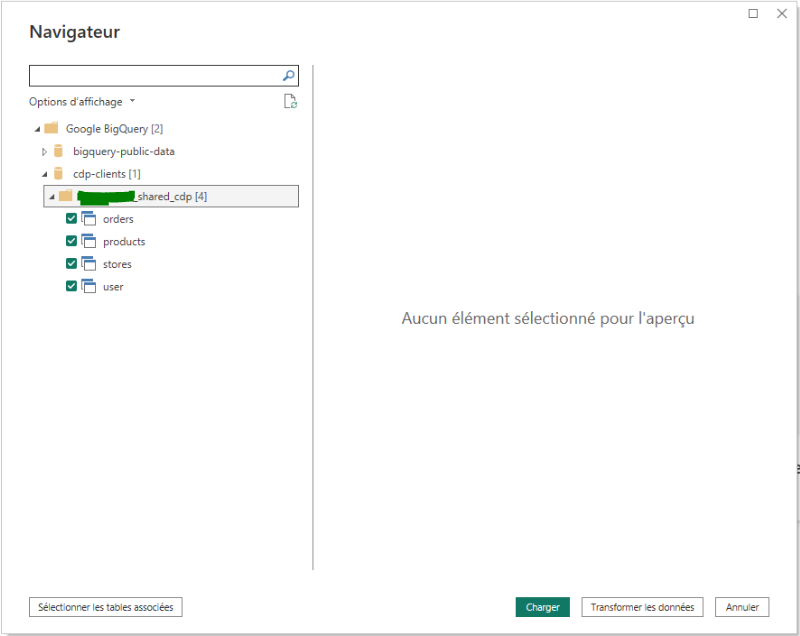
- Then you are prompted for a connection mode, take care to choose DirectQuery, and click OK.
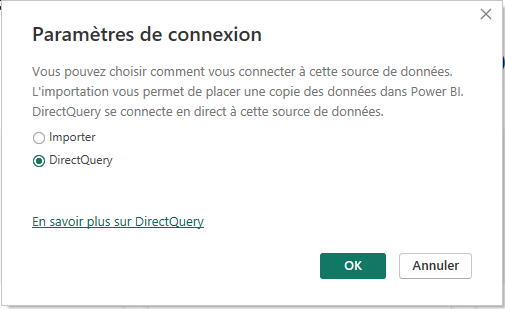
- Power BI then takes a few seconds to initialize the connection, and you are ready to go
Updated 4 months ago
